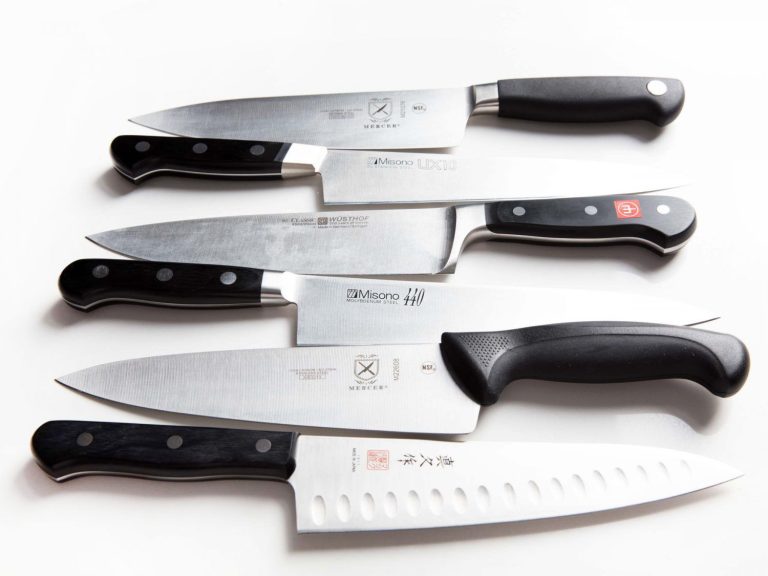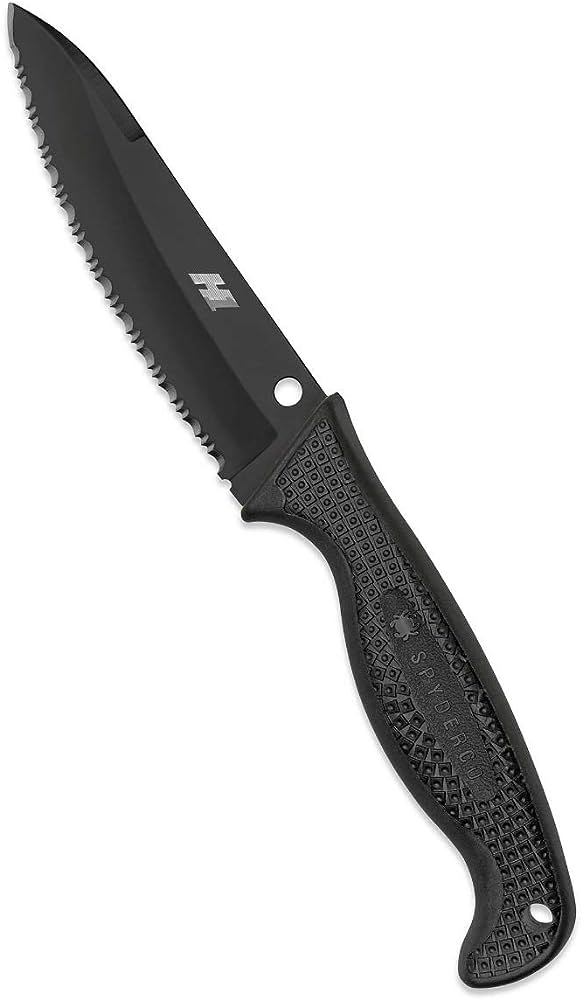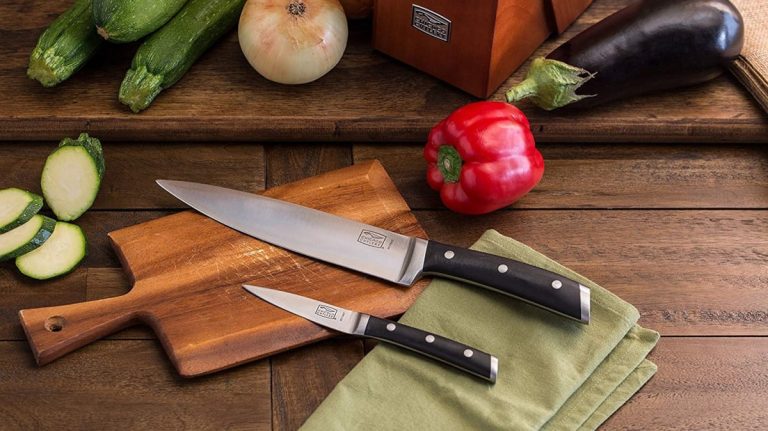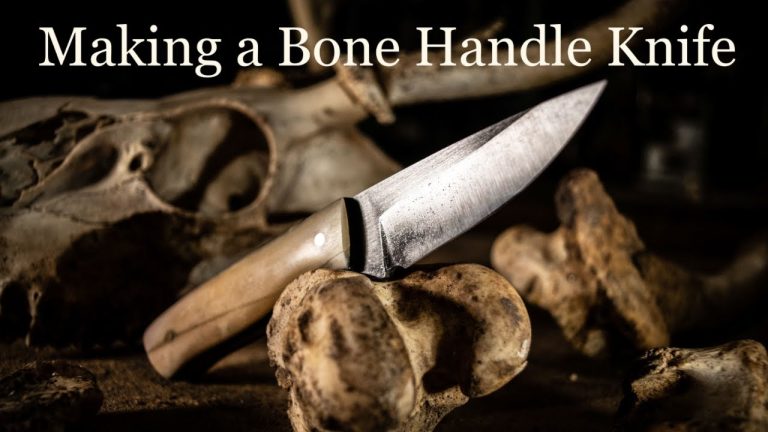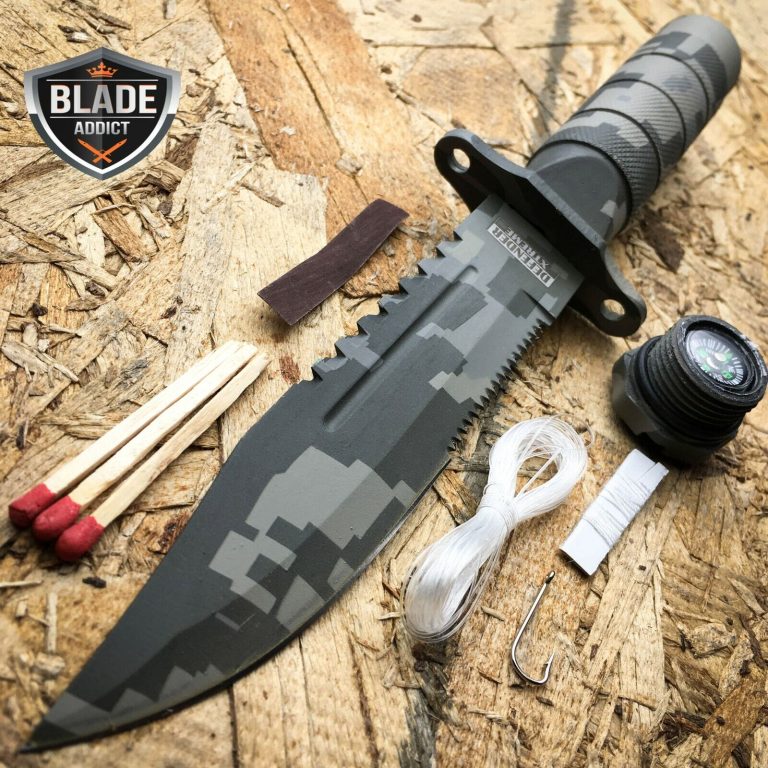Knive Balance : Mastering the Art of Precision
Knife balance refers to the distribution of weight in a knife for optimal handling and control while cutting. Achieving the right balance is crucial for efficient and precise knife work.
In addition to being a practical consideration, knife balance can also impact the comfort and safety of the user. Understanding the importance of knife balance and how to evaluate it can help in selecting the right knife for specific tasks.
Whether you’re a professional chef or an amateur home cook, having a knife with the appropriate balance can greatly enhance your culinary experience. We will explore the factors that contribute to knife balance and provide tips on how to assess and adjust it to suit your needs.

Credit: www.amazon.com
The Importance Of Knife Balance In Precision Cutting
A well-balanced knife is crucial for precision cutting due to its direct impact on technique, efficiency, and safety. When knife balance is in perfect harmony, it enhances the cutting technique, allowing for smooth and controlled movements. This results in cleaner cuts and more precise slices, making it an invaluable asset for professional chefs and home cooks alike.
Not only does knife balance affect technique, but it also plays a significant role in efficiency. A well-balanced knife requires less effort and force to maneuver, reducing fatigue and improving overall performance. This allows for a more streamlined cutting process that saves both time and energy, particularly during extended culinary tasks.
Furthermore, knife balance is closely tied to safety. When a knife is properly balanced, it reduces the risk of injuries caused by loss of control or uneven cutting action. With a well-balanced knife in hand, the chef can maintain a secure grip and execute precise cuts without compromising safety.
| Key Benefits of Knife Balance: |
|---|
| • Enhanced cutting technique |
| • Improved efficiency |
| • Enhanced safety |
Factors Affecting Knife Balance
The balance of a knife is influenced by several factors. One important factor is the weight distribution. The way the weight is distributed along the knife blade affects its balance. Knives with a proper weight distribution are more balanced and easier to use. The handle design also plays a crucial role in achieving optimal balance. A well-designed handle provides a comfortable grip and helps maintain balance. Another factor to consider is the blade shape. Different blade shapes can impact the overall balance of a knife. Blades with a heavy front end might be more front-heavy, while blades with a tapered shape can distribute the weight more evenly. Achieving balance in a knife is essential for accurate and efficient cutting. By considering the weight distribution, handle design, and blade shape, you can ensure a well-balanced knife that is easy to handle.
Choosing The Right Knife
Choosing the right knife is crucial for anyone who appreciates culinary precision. When selecting a well-balanced knife, there are key factors to consider:
- Evaluating the balance of different knife styles and types
- Understanding the balance point and its significance in knife selection
Balance plays a vital role in the performance and comfort of a knife. Whether you’re a professional chef or an enthusiastic home cook, having a well-balanced knife enhances your control and reduces fatigue during prolonged usage. Different knife styles and types have varying blade-to-handle ratios, and it’s important to test and evaluate their balance. The balance point, typically where the blade meets the handle, affects how the knife feels in your hand and influences maneuverability. By understanding the significance of balance, you can make an informed decision when choosing the right knife for your cooking needs.
Balancing A Knife
A balanced knife is essential for efficient and precise cutting. Identifying an unbalanced knife is the first step towards achieving a proper balance. Look for signs such as the knife tipping to one side or feeling heavier in one area.
Adjusting the knife’s balance can be done through handle modifications. Ensuring that the handle is comfortable and properly aligned with the blade can greatly improve balance. This can be achieved by adding weight to the handle or adjusting its shape to distribute the weight evenly.
Weight distribution techniques can also be utilized for improved balance. For example, tapering the blade towards the handle reduces the weight at the front, leading to better balance. Additionally, using lighter materials for the handle or incorporating a full tang construction can help achieve a more balanced knife.
Testing Knife Balance
| Knife Balance | |
| Heading: Testing Knife Balance | |
| Subheading: Conducting simple tests to determine a knife’s balance | |
When assessing a knife’s balance, it is essential to utilize various testing methods to determine its weight distribution. By using balance-testing tools and techniques, it becomes easier to pinpoint potential imbalances that could affect performance. One simple test is to place the knife horizontally on your finger near the bolster and observe whether it tilts towards the handle or the blade. Similarly, conducting a vertical balance test involves suspending the knife from a cord at different points along its blade and measuring the angle at which it hangs.
In addition to these tests, it is crucial to assess a knife’s balance in different cutting scenarios. The balance that feels comfortable during slicing may differ when performing intricate tasks, and vice versa. By evaluating the knife’s handling during various cutting motions, such as rocking, chopping, and precision slicing, one can better understand its balance characteristics.
| Subheading: Using balance-testing tools and techniques |
An essential tool for testing a knife’s balance is a digital balance scale. By placing the knife on the scale, you can determine its exact weight and evaluate its distribution. Additionally, a center of gravity tester can help identify the blade’s balance point, indicating how weight is distributed between the handle and the blade. This information can be valuable, especially for professional chefs or anyone looking for a knife that suits their specific cutting style.
Furthermore, performing a fingertip balance test involves gently balancing the knife on the tip of your finger to identify any noticeable imbalances. Additionally, incorporating subjective assessments, such as personal feel and comfort, can provide valuable insights into a knife’s balance.
| Subheading: Assessing the balance of a knife in different cutting scenarios |
When assessing a knife’s balance in different cutting scenarios, consider variables such as weight distribution, handle design, and blade shape. A well-balanced knife should allow for precision and control, regardless of the cutting technique used. Testing the knife’s balance during rocking motions, where the blade’s heel and tip are in contact with the cutting board, can reveal how effectively it glides through ingredients. Similarly, assessing balance during chopping movements can help determine if the knife’s weight distribution maximizes power and reduces strain on the hand and wrist.
In conclusion, testing a knife’s balance is paramount to ensure optimal performance and user comfort. Utilizing balance-testing tools, conducting various tests, and assessing balance in different cutting scenarios will help you find a knife that suits your specific needs.
Regular Maintenance Practices
Regular Maintenance Practices
Proper storage and handling are crucial to maintaining knife balance. When storing knives, it is essential to keep them in a suitable knife block, magnetic strip, or sheath to prevent them from getting damaged or dulled. Additionally, avoid throwing knives into a drawer or leaving them exposed to moisture or extreme temperatures.
Cleaning and caring for your knives regularly also plays a significant role in preserving their balance. After each use, make sure to wash the knife with warm soapy water, dry it thoroughly, and store it properly. Moreover, avoid cutting on hard surfaces such as glass or ceramic, as it can damage the knife’s blade and throw off its balance.
Another important aspect of knife maintenance is regular sharpening. Dull knives not only hinder their cutting performance but can also affect their balance. Properly sharpened knives ensure smooth and accurate cuts while maintaining their optimal balance. Sharpening tools such as honing rods or whetstones can help maintain the sharpness and balance of your knives.
Troubleshooting Imbalanced Knives
Troubleshooting Imbalanced Knives
Imbalanced knives can be a frustrating issue to deal with in the kitchen. Understanding the common issues causing knife imbalance is the first step in resolving the problem. One possible cause is damaged or worn out handles, which can affect the overall balance of the knife. Another issue is having a blade that is heavier on one side, often due to an improper sharpening technique.
For minor balance problems, there are techniques you can try to correct the issue. First, ensure that the blade is properly centered within the handle by adjusting the rivets or screws if necessary. Balancing weights can also be added to the handle to even out the weight distribution.
However, for major balance issues, seeking professional assistance is recommended. Expert knife sharpeners or professional knife makers can assess and correct the imbalance effectively and safely.
Long-Term Balance Preservation
| Knife Balance | |
|---|---|
Strategies for preventing balance changes over time | Routine checks to ensure ongoing knife balance |
|
|
Conclusion
Finding the right balance in a knife is essential for a smooth and enjoyable cooking experience. As we have explored in this blog post, the balance of a knife affects factors such as control, comfort, and precision. Achieving the proper balance requires careful consideration of the weight distribution between the blade and handle.
This can be achieved through selecting a knife with a full tang construction or by experimenting with different handle materials. Additionally, the grip and technique used by the chef also play a role in maintaining an optimal balance. By understanding the significance of knife balance and considering these factors, chefs and cooking enthusiasts can enhance their culinary skills and create delicious meals with ease.
So, the next time you reach for your knife, remember the importance of balance, and let it guide you towards culinary excellence.

